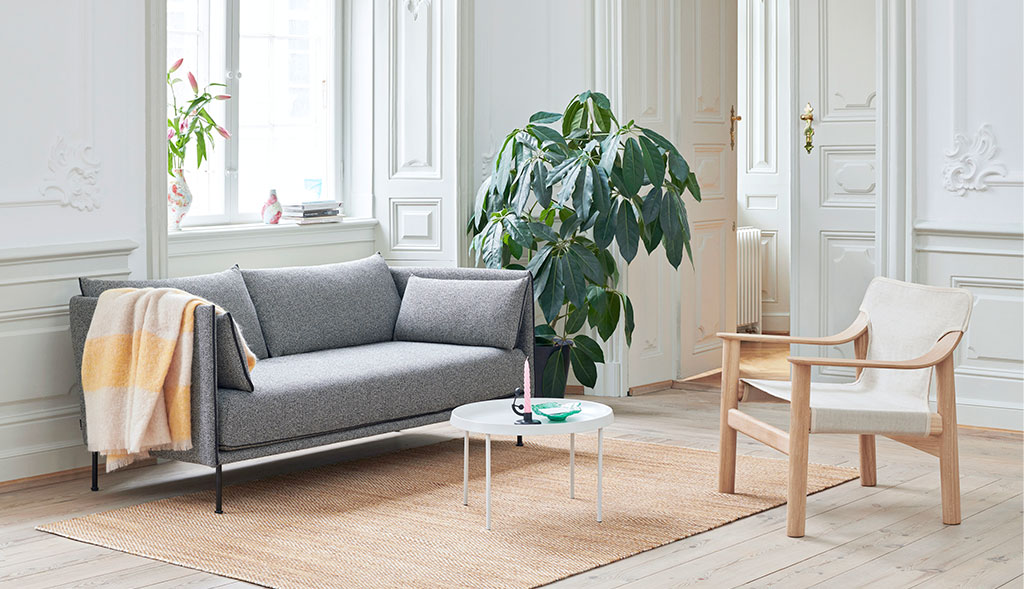Scandinavian Style | Exploring the Interior Trend
What is Scandinavian Style Interior Design?
Scandinavian interior design - you probably already know exactly how this popular style feels. This clean, calm and inviting interior trend is as beautiful as it is timeless. But what actually is Scandi style? And how we do incorporate it into our homes? In this guide, we explore the Scandinavian design principles to help you understand how the look is created so that you too can enjoy the benefits of this beautiful, practical, and calming interior design style.
As a movement, Scandinavian design began in the early 20th century, mixing old and new styles from Denmark, Sweden, Iceland, Finland, and Norway. In Scandinavia, industrialization came later than much in Europe, and as a result, Scandinavian style blends both contemporary design and traditional craftsmanship. The style is simple and minimal with a strong focus on form, function and quality. At its heart, Scandinavian style centres on simple yet impactful ways of improving daily life, adding subtle design flair to the everyday.
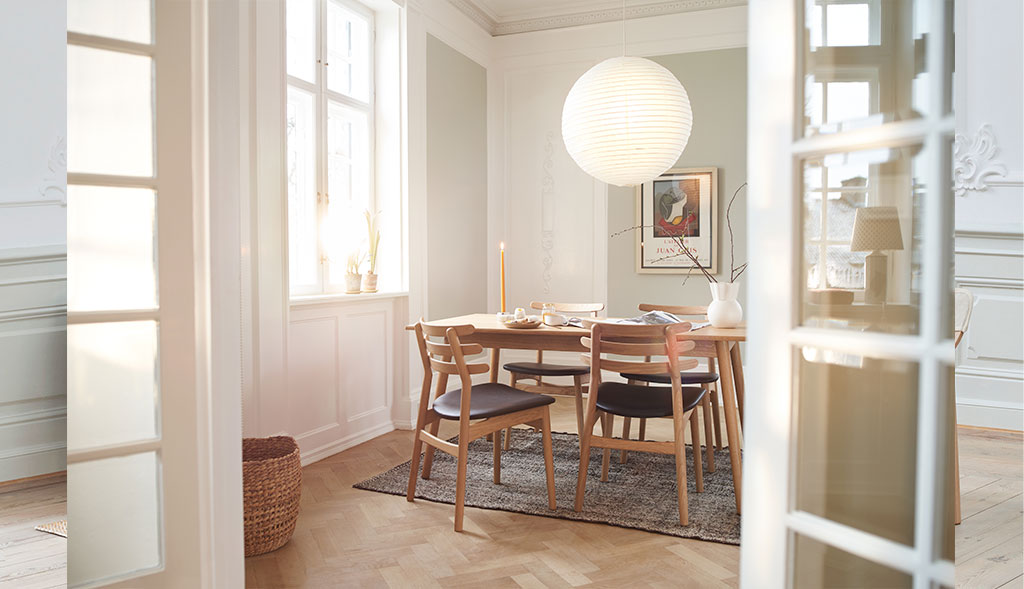
How to bring Scandi style into your home
1. Less is more
Keep it simple, clean lines and white space help to create the sense of calm associated with Scandi style interiors. One thing a Scandinavian room is definitely not? Cluttered. That being said, rather than being tempted by an ultra-minimalist look, aim for lagom, a Swedish term that translates to “in between” or “just right.” Not too much, and not too little. Keep walls and surfaces fairly clear and let a few considered pieces of furniture and decorative accessories do the talking.

2. Light is Key
Natural daylight is a rare commodity for Scandinavians during the long winter months. With this in mind, rather than using colours that will absorb light, Scandinavian interiors are carefully considered to maximize natural light and let it bounce around the room.
As so much of the year is spent without a lot of natural light, it's also important to pay attention to artificial lighting for a Scandi scheme. A range of dimmable ceiling, wall, floor and table lights helps create an inviting ambience. You probably won't use them all at once, but a layered lighting scheme is a great way to introduce a little 'hygge' into your space.
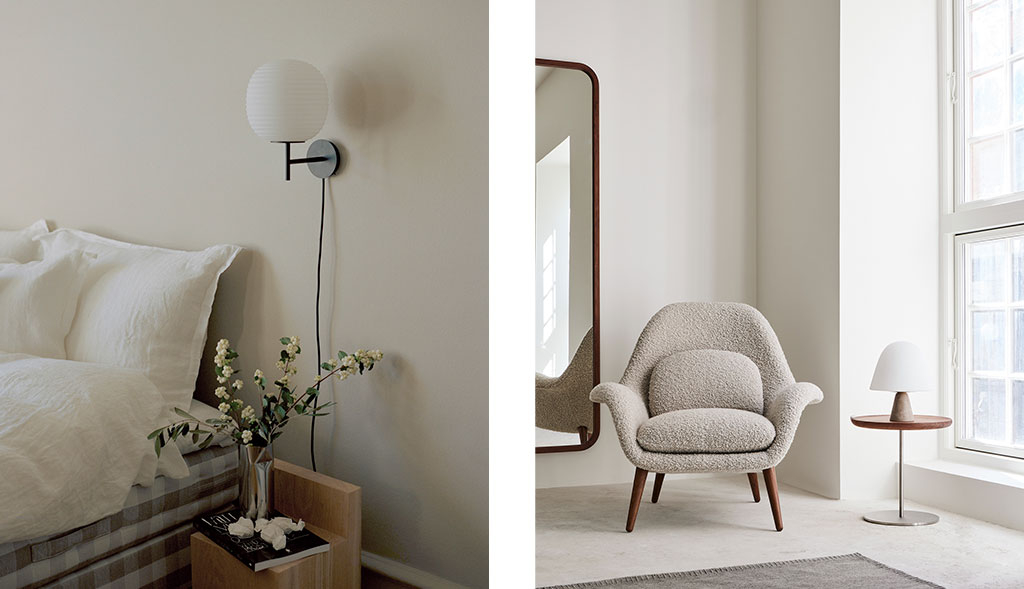
3. Balance of functionality and comfort
With Scandinavian interiors, furniture should be both functional and comfortable. It's helpful to really consider how a piece of furniture will function within your space and in your daily life. Opt for designs that will enhance your lifestyle, look beautiful and make you feel comfortable. Often the most functional designs are multi-purpose, for example, a stool that can also be used as a coffee table.
The quote, "have nothing in your houses that you do not know to be useful or believe to be beautiful" sum this approach up perfectly.
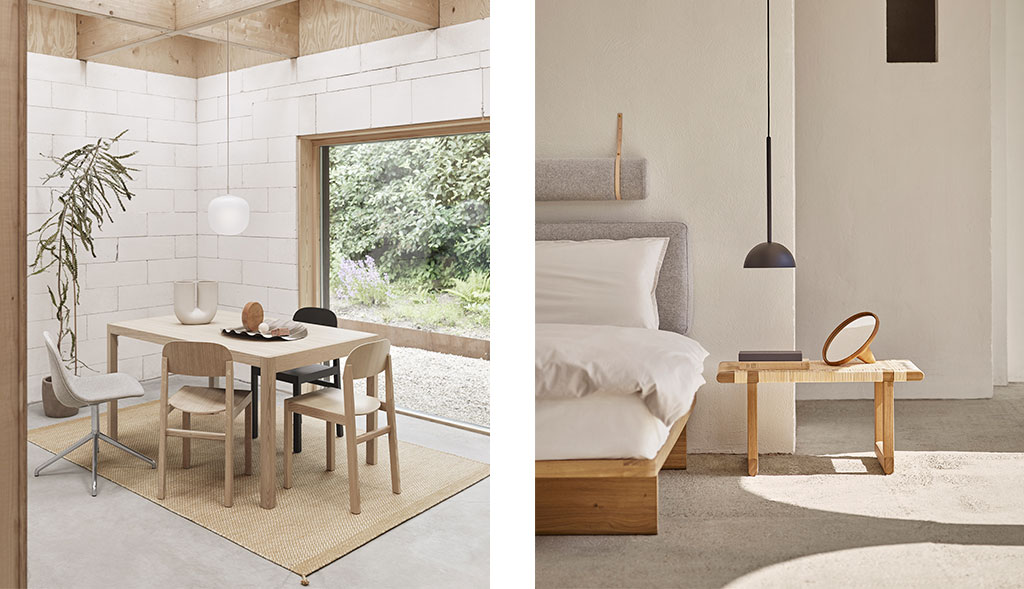
4. Quality over Quantity
Scandinavian furniture, lighing, and home accessories items should have a modern and striking look while remaining simple and not overly ornate. It's all about embracing Scandinavia's rich heritage of craftsmanship.
By taking a leaf out of the Scandi design philosophies and investing in quality, well-crafted items you’re going to build a collection of furniture pieces that will last you a lifetime. By buying authentic originals (which is all you’ll find at Utility) you’re ensuring designers can keep on designing, workers are paid fairly and waste is kept at a minimum. Furniture and lighting designs from the mid-century play a big part in the Scandinavian style we see today, designs from Arne Jacobsen, Hans Wegner and Charles & Ray Eames are synonymous with the style.
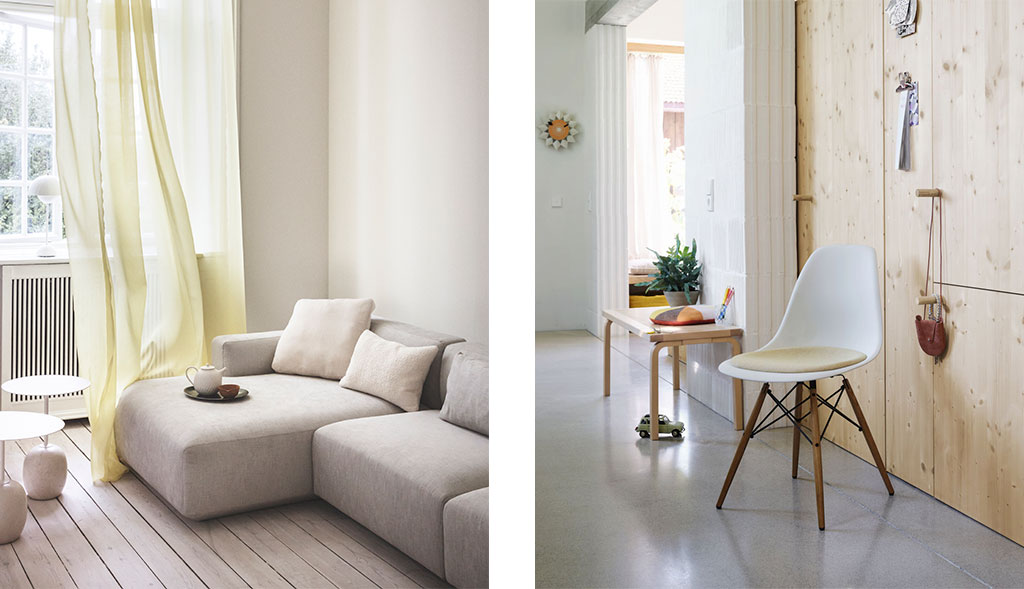
5. Muted Colour Palette
Bearing in mind the need for light, Scandi interiors opt for light and warm colours for your furniture and walls. This doesn't have to be white, it could also be grey, beige, cream or use gently greyed down colours such as soft duck egg blues or gentle grey greens.
If you love colour don't despair! Accent colour can be introduced with artworks and accessories. This will apply to the flooring as well as the walls and ceilings while floorboards are often white-washed or in very pale timbers to create even more light. You can also introduce colour with natural timber.
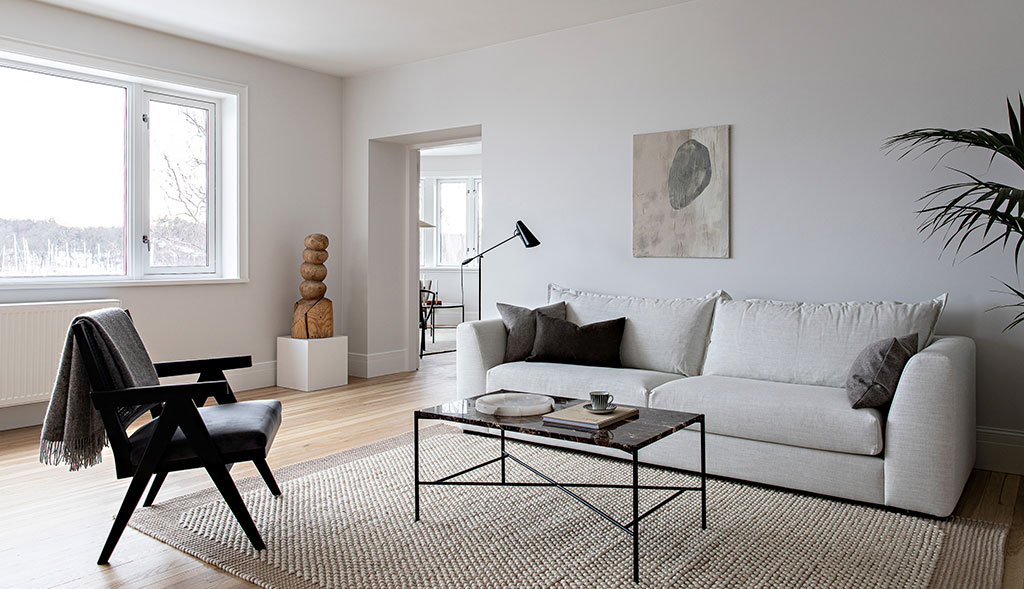
7. Introduce Natural Elements
When you are working with a very simple light colour palette, you really need to incorporate as many natural finishes as possible. Scandi style is all about layers. Any neutral scheme needs definition and this can be introduced with varying textures. Scandinavians rarely install wall to wall carpets, preferring to work with either natural stone or timber for their flooring and employing the use of lots of rugs. Natural fibres like Hemp, Sisal and Wool in soft neutral colours are an important element of this look. This is also a great opportunity to introduce some soft greys into the colour palette.

7. Texture & Warmth
With simple shapes and a muted backdrop, it’s so crucial to add warmth and interest with fabrics and texture. Plus, entertaining indoors is an important part of Scandinavian culture in autumn/ winter so creating those “hygge” vibes is important ? Think candles, throws, natural wood, wool, greenery, chunky rugs and tactile cushions.
To increase hygge, add things that remind you of warmth and comfort, such as candles, soft blankets, and slippers. If you have a fireplace, make this a focal point and gathering place. Add personal touches that make you happy.

Time for more? Japandi - Exploring the Hybrid Fusion Trend | An Easy Chair For Contemporary Living | Best Lounge Chairs For The Modern Home
